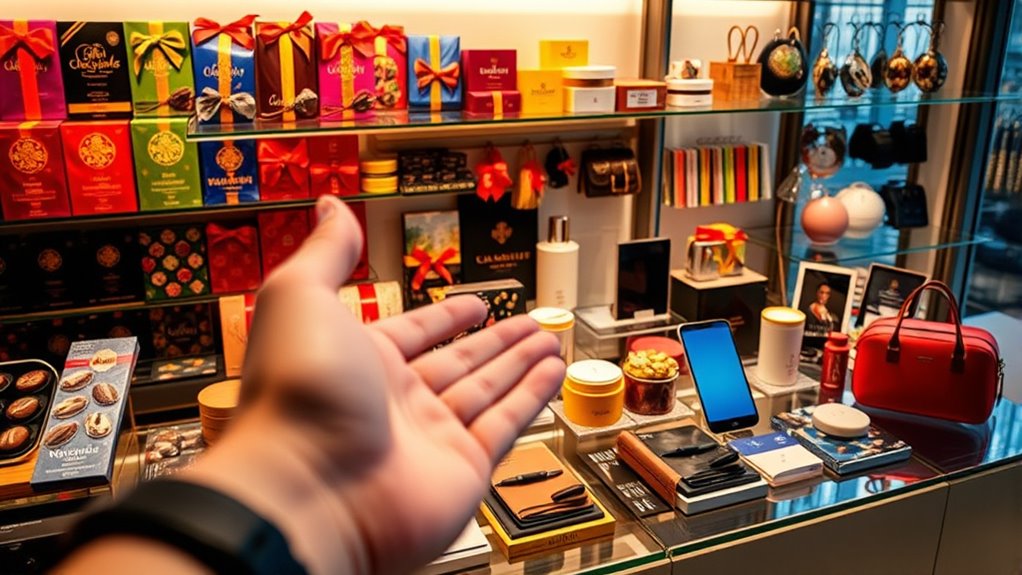Your spending habits are driven by emotional needs, social influences, and subconscious cues. You might buy to boost your mood, keep up with peers, or respond automatically to ads and social pressures. Impulse purchases often happen without thinking, reinforcing habits over time. Recognizing these triggers helps you understand why you buy what you do. Keep exploring, and you’ll uncover ways to make mindful decisions that support your financial and emotional well-being.
Key Takeaways
- Emotional needs like happiness or insecurity often drive impulsive spending beyond rational considerations.
- Social influences, including peer pressure and media messages, shape perceptions of desirability and status.
- External cues and subconscious triggers activate spontaneous purchases without prior planning.
- Media and advertising manipulate perceptions of necessity, encouraging reactive buying based on external stimuli.
- Mindful strategies, such as reflecting on motivations and setting boundaries, help control emotional and impulsive spending.

Understanding why we spend money the way we do involves more than just tracking our income and expenses; it explores the complex psychology behind our purchasing decisions. At its core, our spending habits are driven by emotional triggers that influence how we feel about ourselves and our surroundings. For example, you might find yourself buying a luxury item after a stressful day as a way to boost your mood or seek comfort. These emotional triggers are powerful; they connect to feelings of happiness, insecurity, or even boredom, prompting you to make purchases that temporarily satisfy emotional needs rather than rational ones.
Our spending is driven by emotional triggers that seek comfort, happiness, or boredom relief rather than rational needs.
Social influences play a significant role in shaping what and why we buy. From advertisements to peer pressure, your environment constantly bombards you with messages about what’s desirable or necessary. When you see friends with the latest gadgets or fashionable clothes, you might feel compelled to keep up to maintain social status or fit in. The desire for social acceptance can be a strong motivator, often leading you to spend beyond your means simply to align with perceived societal standards. This social comparison fuels a cycle where your self-worth becomes intertwined with material possessions, making it difficult to distinguish genuine needs from superficial wants.
Your subconscious mind also reacts to these social cues and emotional triggers, often without your awareness. For instance, you might impulsively buy something that wasn’t on your shopping list because an advertisement or a friend’s recommendation triggered a desire. This instant gratification reinforces the habit of purchasing to satisfy emotional voids or to gain social approval. Over time, these patterns become ingrained, making it harder to recognize when your spending is driven by genuine necessity versus emotional or social influences.
Additionally, understanding the role of media and its impact on consumer behavior can help you identify how external messages influence your choices. Recognizing these psychological factors helps you become more mindful of your spending. Instead of reacting impulsively to emotional triggers or social pressures, you can pause and ask yourself whether a purchase truly aligns with your values or if it’s just a response to external stimuli. Being aware of these influences allows you to develop healthier habits, like setting boundaries around shopping or reflecting on your motivations before making a purchase. Recognizing the psychological factors behind your spending empowers you to make more intentional choices, leading to greater financial stability and emotional well-being. Ultimately, grasping the emotional and social factors at play helps you regain control over your money, ensuring your spending reflects your true priorities rather than fleeting feelings or societal expectations.
Frequently Asked Questions
How Do Emotions Influence Our Purchasing Decisions?
Ever wonder why you can’t resist that shiny gadget? Emotions hijack your decision-making biases, making you chase fleeting happiness or comfort. Emotional triggers, like guilt or envy, push you to buy more, even when you don’t need it. You might think rationally, but feelings take charge, leading to impulsive spending. So, next time your mood swings, remember—your wallet’s just another emotional tool waiting to be manipulated.
What Role Does Social Pressure Play in Consumer Behavior?
Social pressure considerably impacts your consumer behavior through peer influence and social conformity. When you see others buying certain products or brands, you often feel compelled to follow suit to fit in or gain approval. This desire to conform to social norms can lead you to make impulsive purchases or choose specific items, even if they don’t align with your true preferences, just to be part of the group.
How Can Understanding Psychology Improve Personal Spending Habits?
Understanding psychology helps you improve your personal spending habits by promoting budget mindfulness and boosting financial literacy. When you’re aware of emotional triggers and cognitive biases, you can make more intentional choices, resist impulse buys, and stick to your budget. This awareness allows you to develop healthier financial habits, prioritize needs over wants, and ultimately achieve greater financial stability and peace of mind.
Why Do Limited-Time Offers Trigger Impulse Buying?
Ever notice how limited-time offers suddenly make you want to buy? That’s the scarcity effect at work, creating urgency impulse. When you see a deal ending soon, your brain fears missing out, pushing you to act quickly. This sense of scarcity tricks your mind into believing the opportunity won’t come again, making you more likely to make impulsive purchases before it’s gone.
How Does Branding Affect Our Perception of Value?
Branding influences your perception of value by creating a sense of trust and familiarity through visual branding. When you see consistent logos, colors, and design, it boosts your brand loyalty, making you more likely to choose that brand over others. This perception of higher value can lead you to pay premium prices because the visual branding signals quality, reputation, and emotional connection, shaping how you evaluate the worth of products or services.
Conclusion
Think of your spending habits as a garden. When you choose what to plant, you shape what blossoms in your life. By understanding your motives and impulses, you can tend to your financial garden with care, planting wisely and pruning excess. When you become aware of why you buy, you take control of your landscape, ensuring it flourishes with what truly matters. Your choices, like a well-tended garden, grow into a fulfilling and vibrant life.










